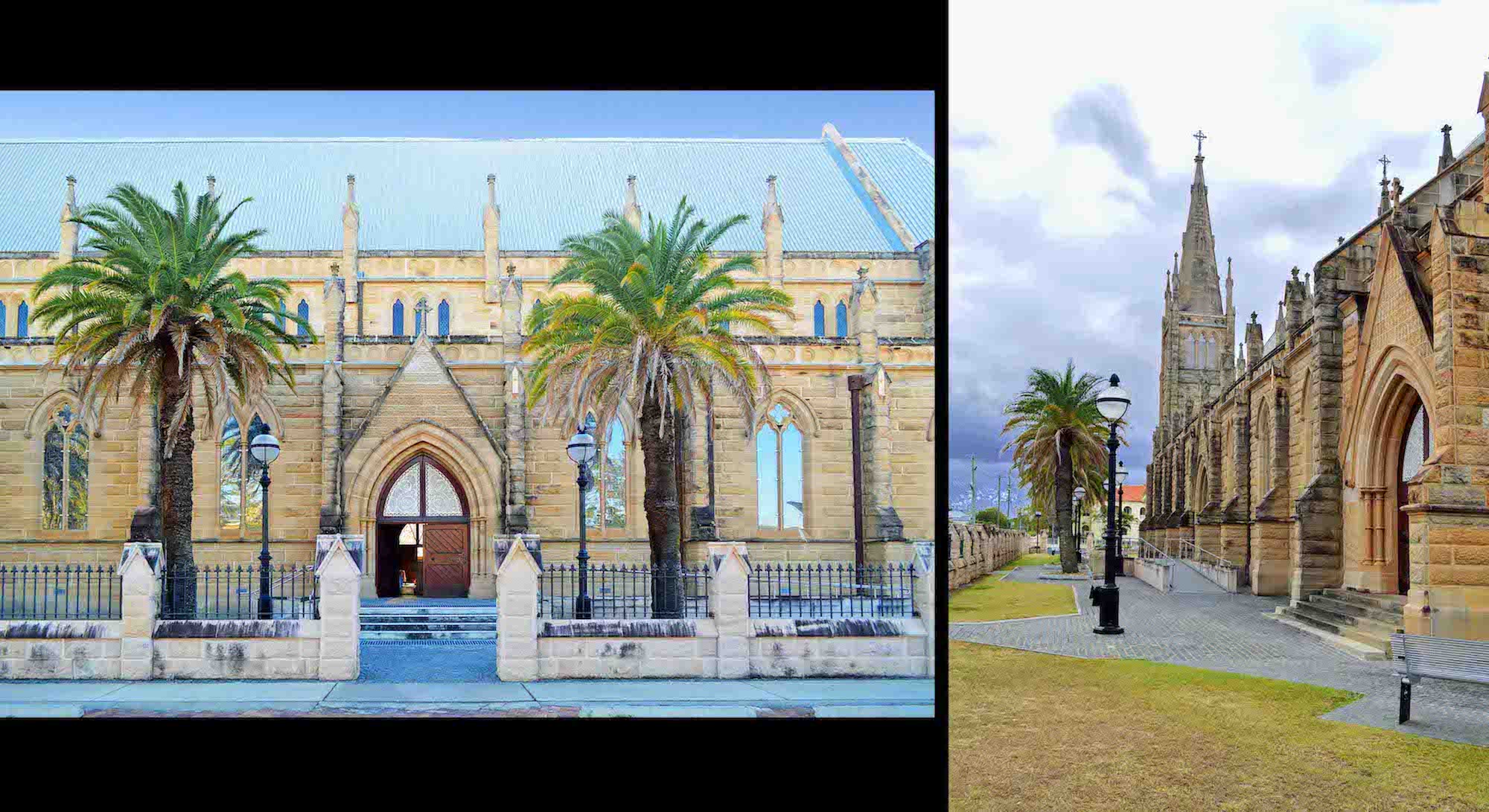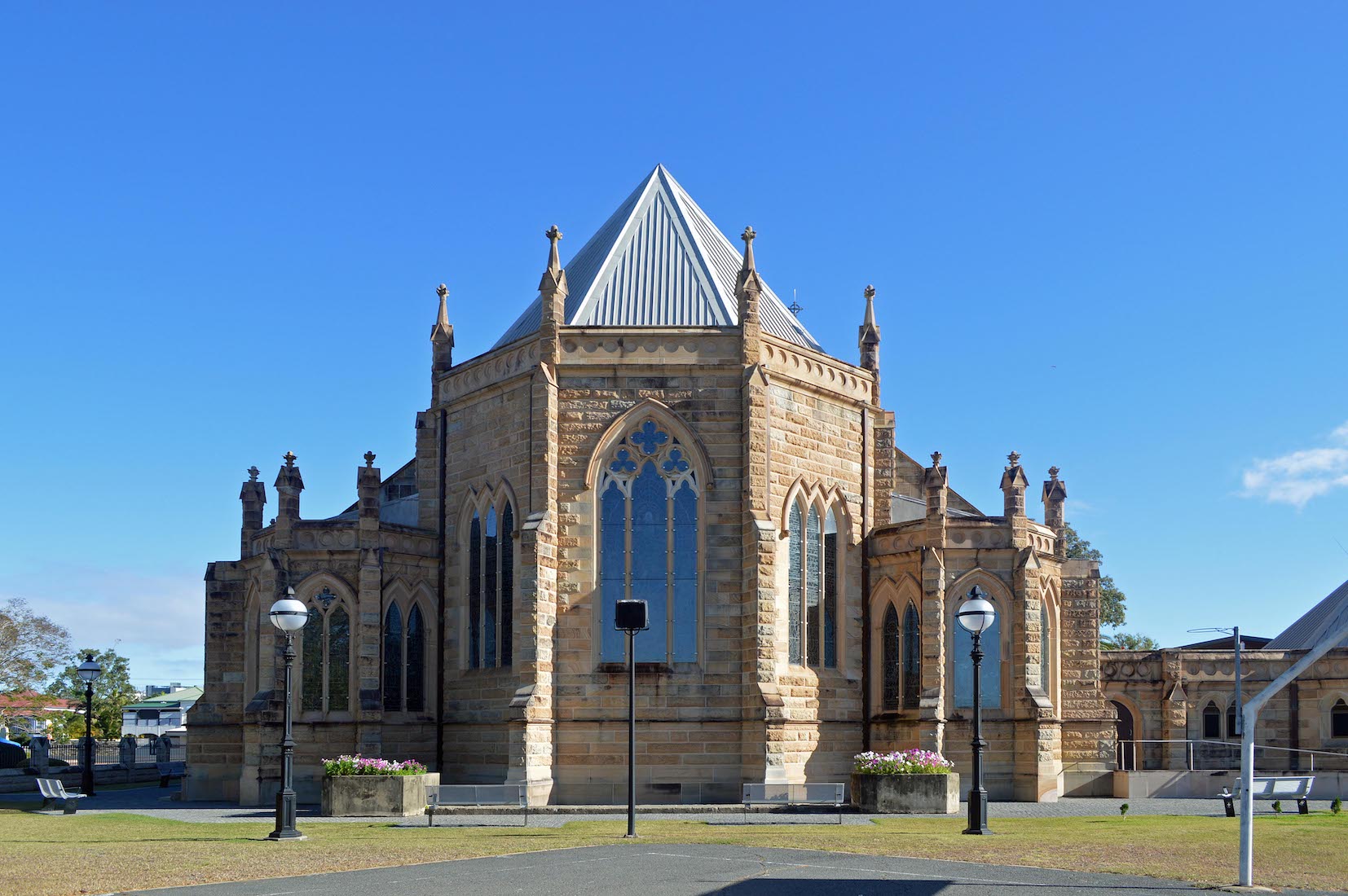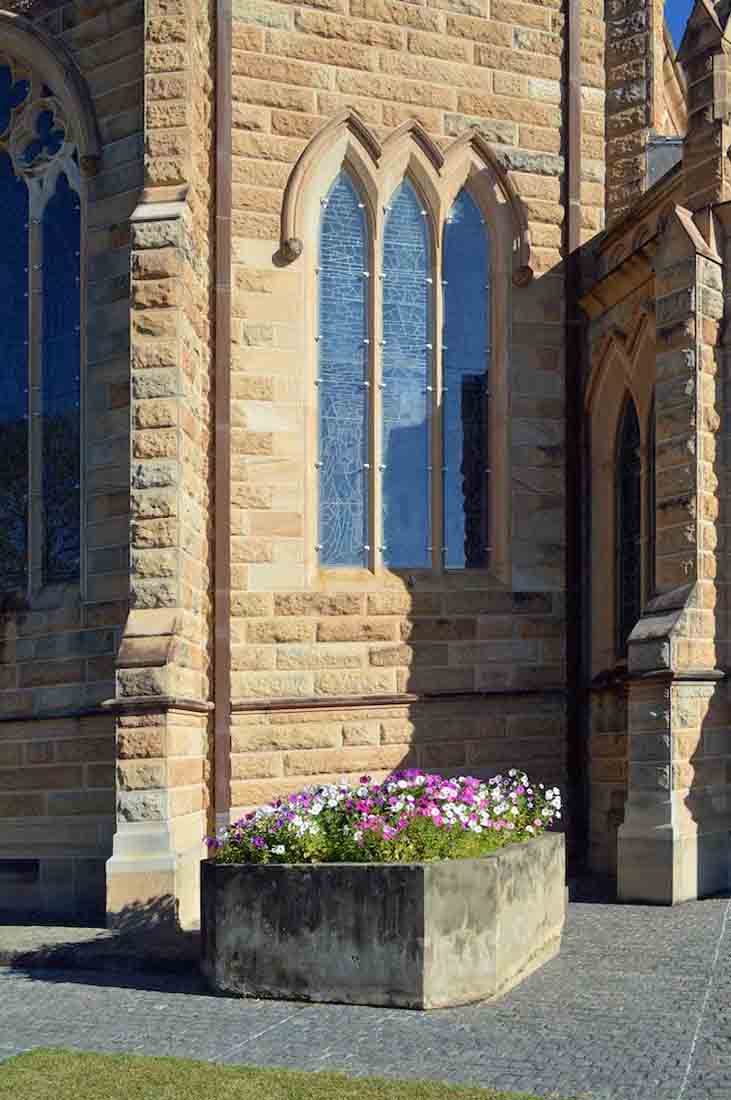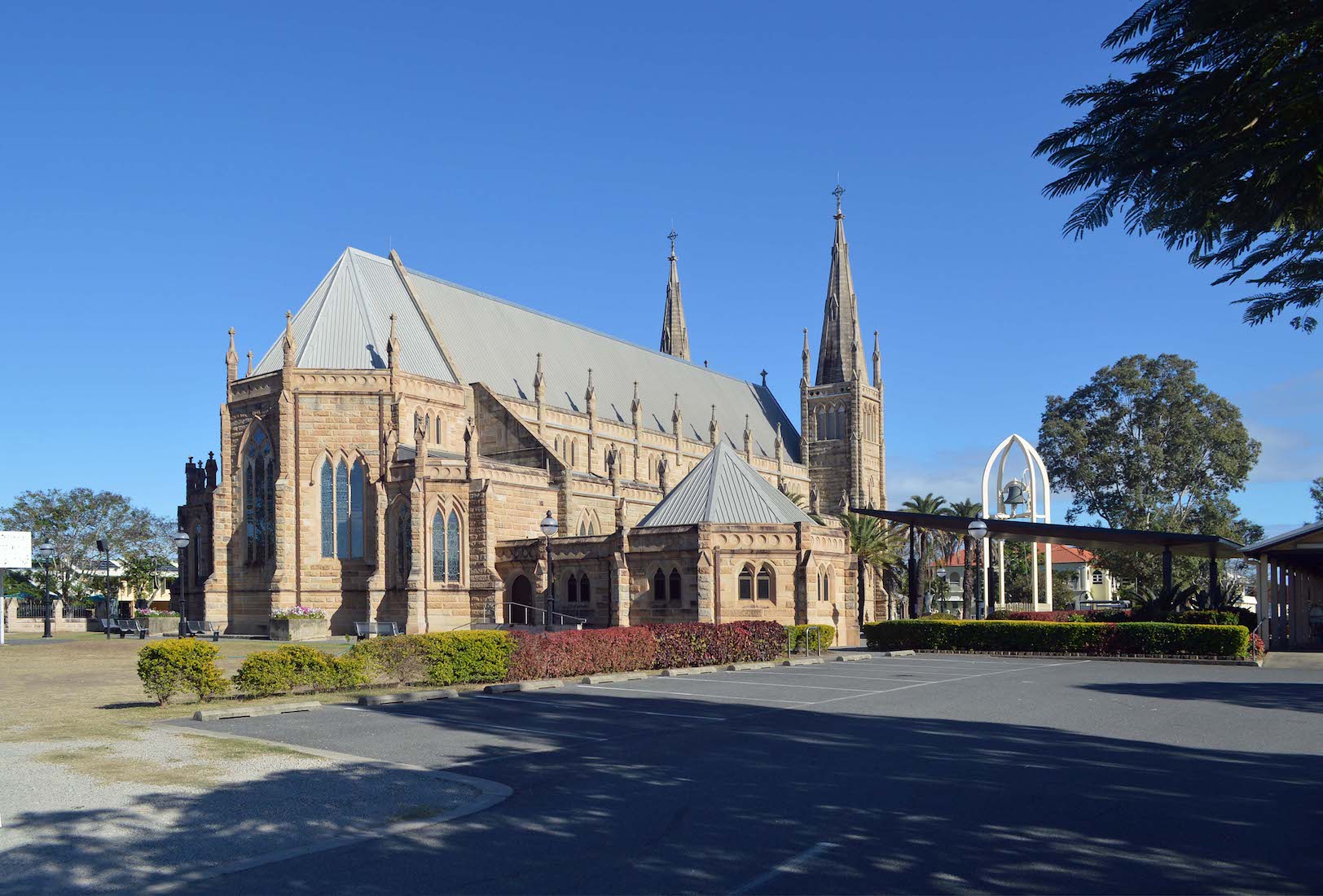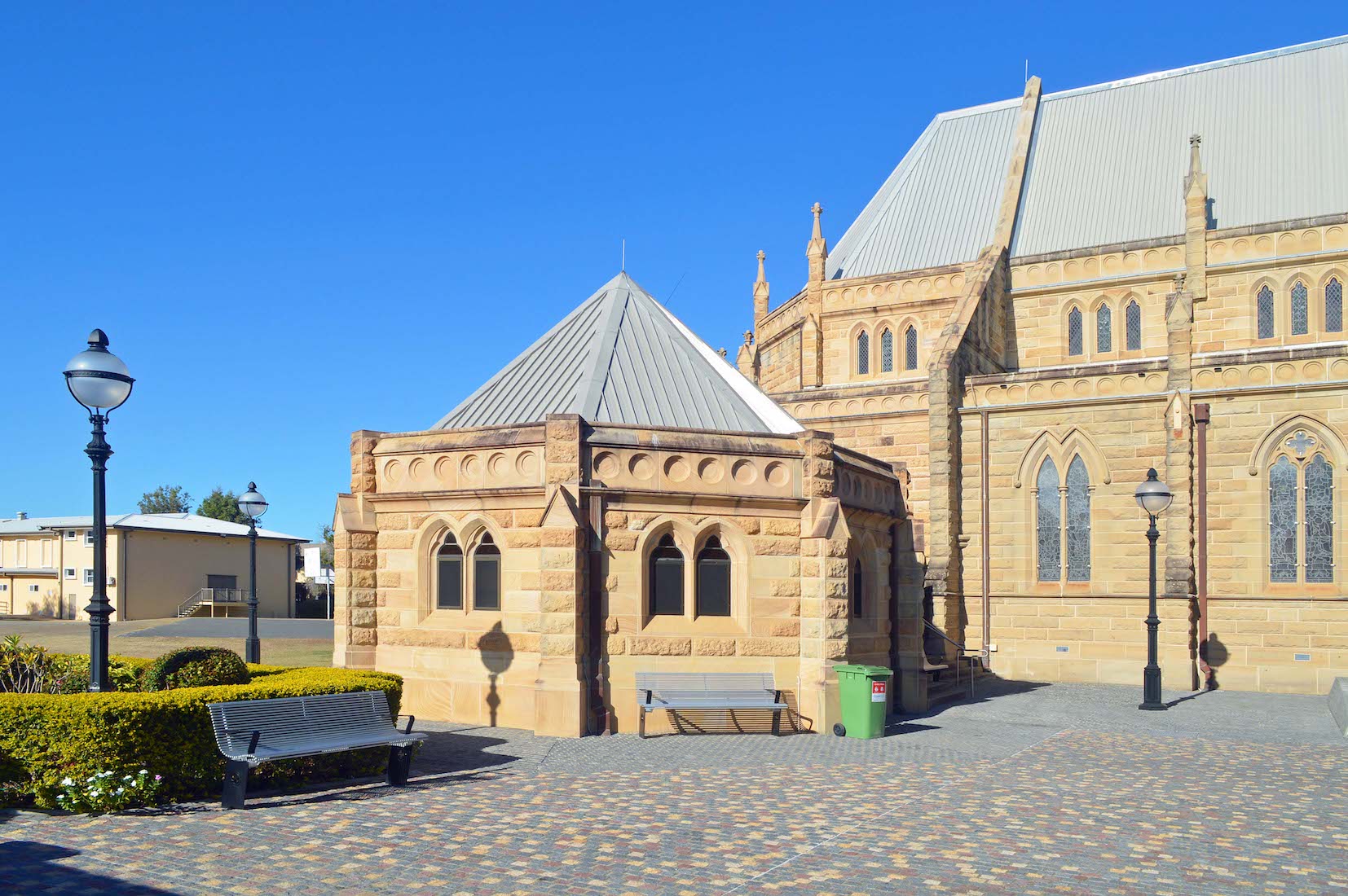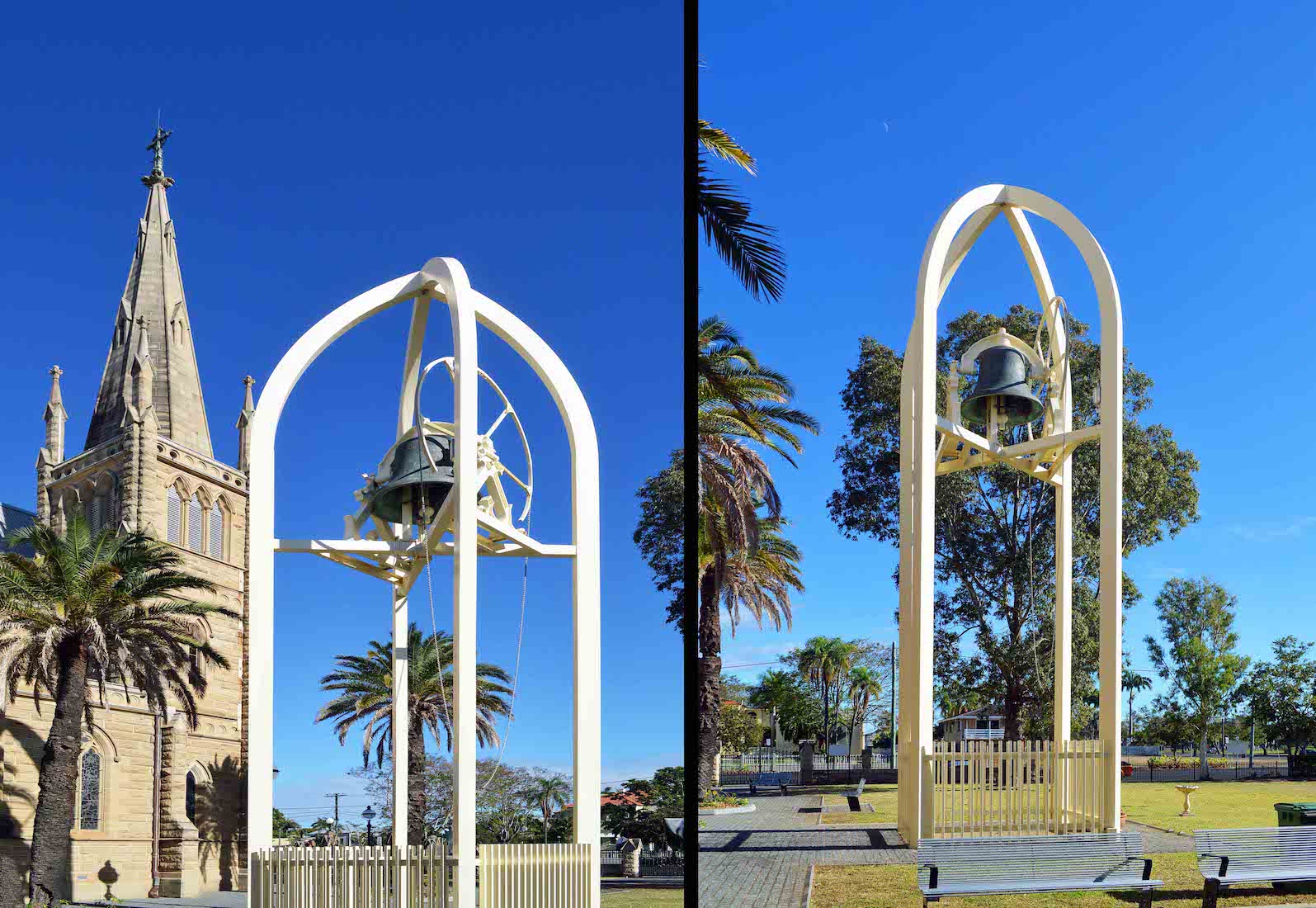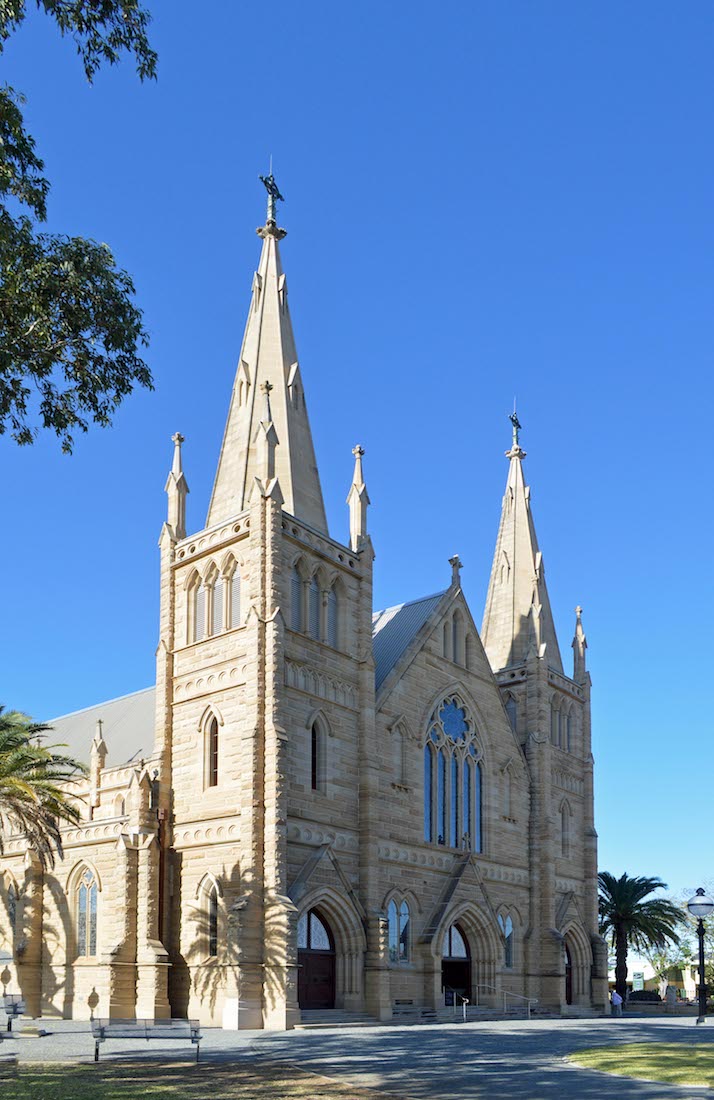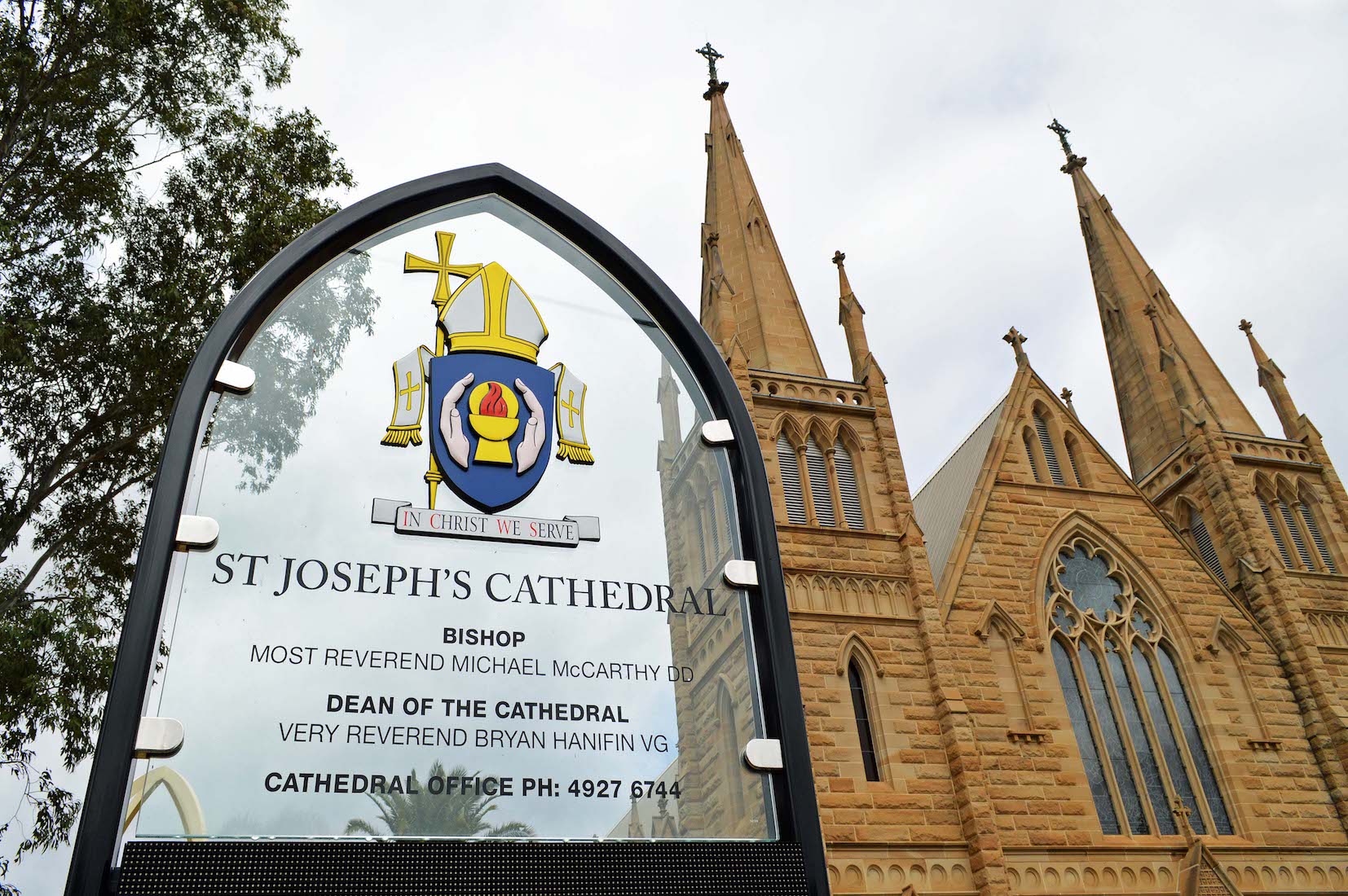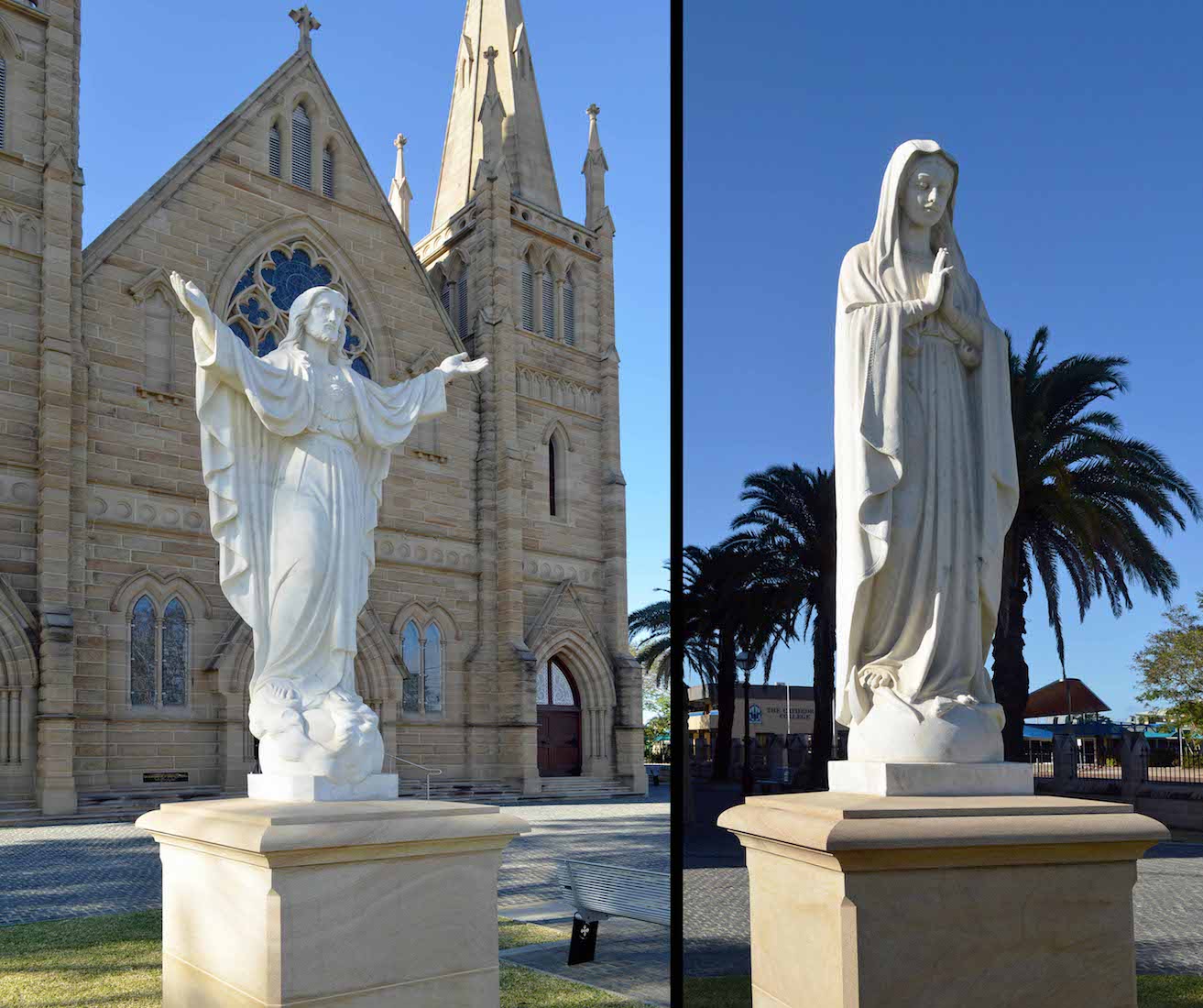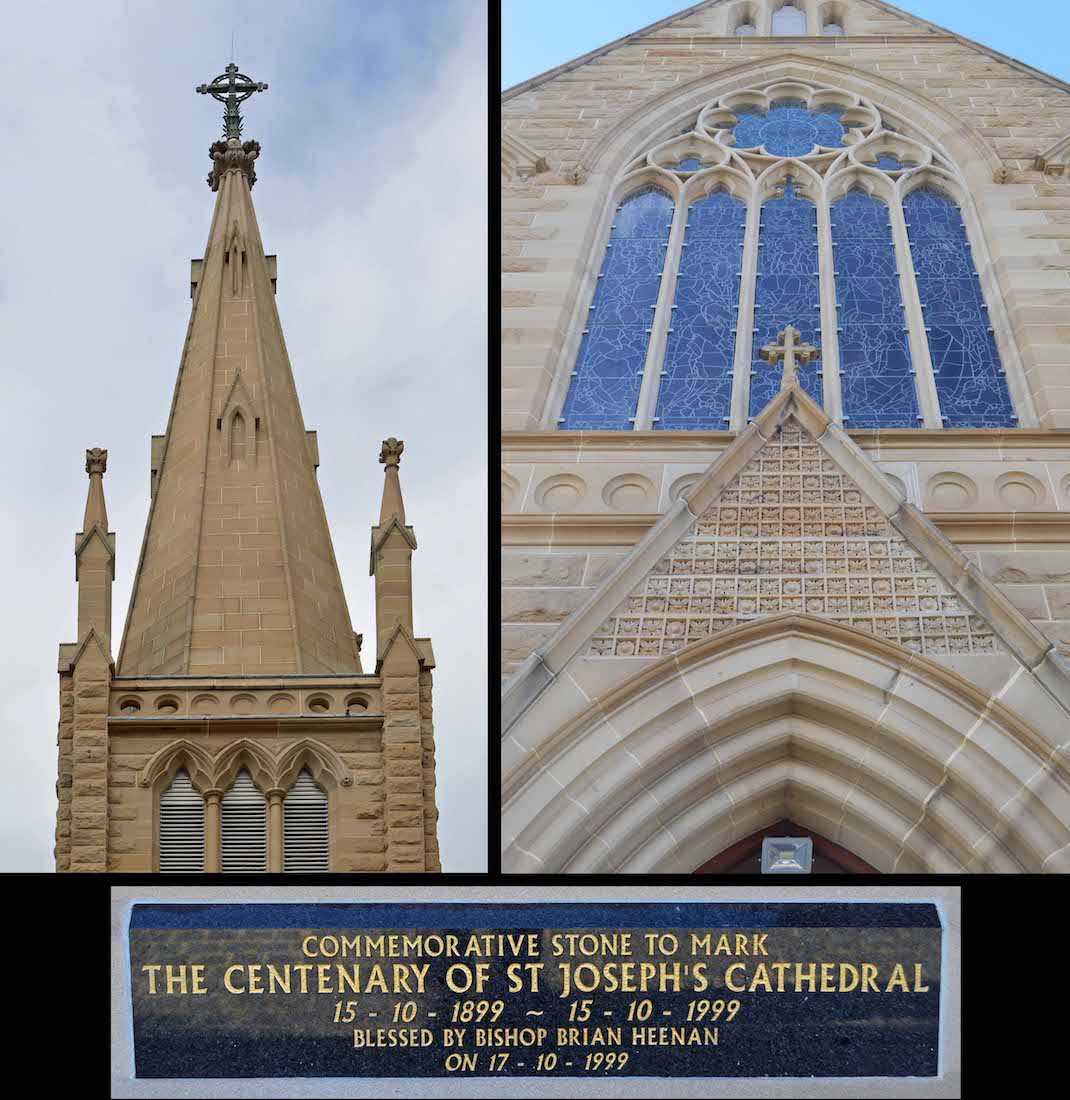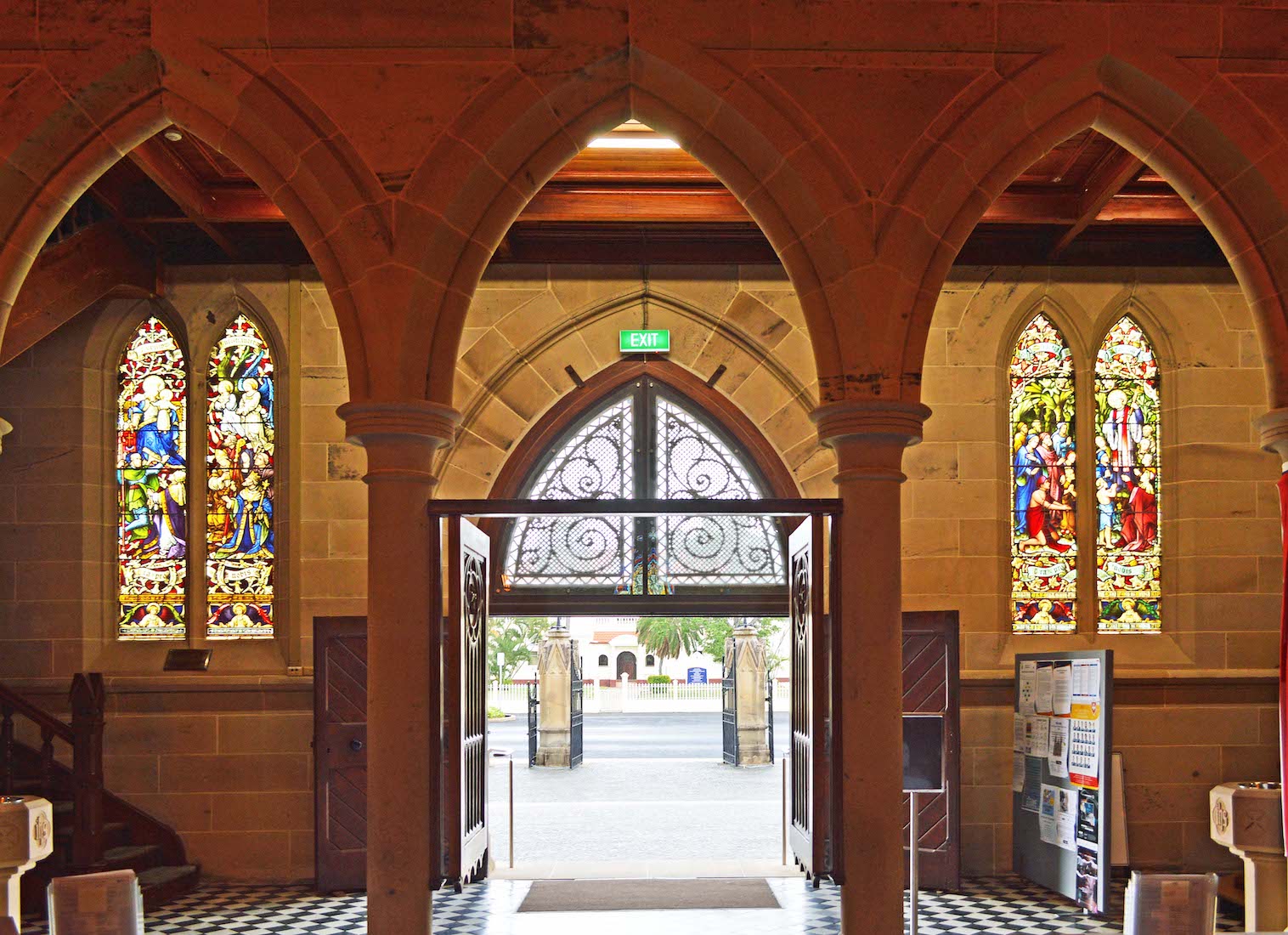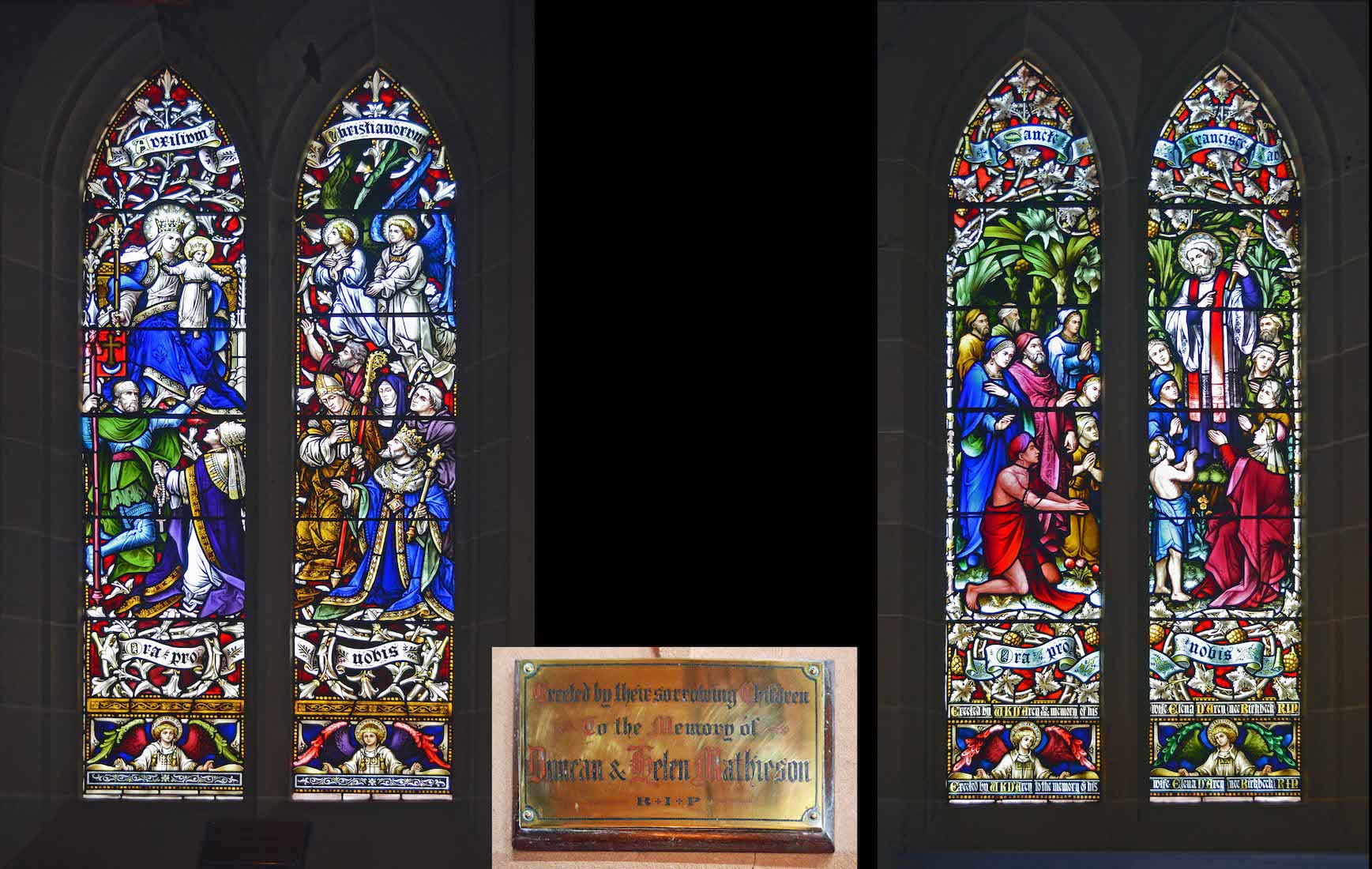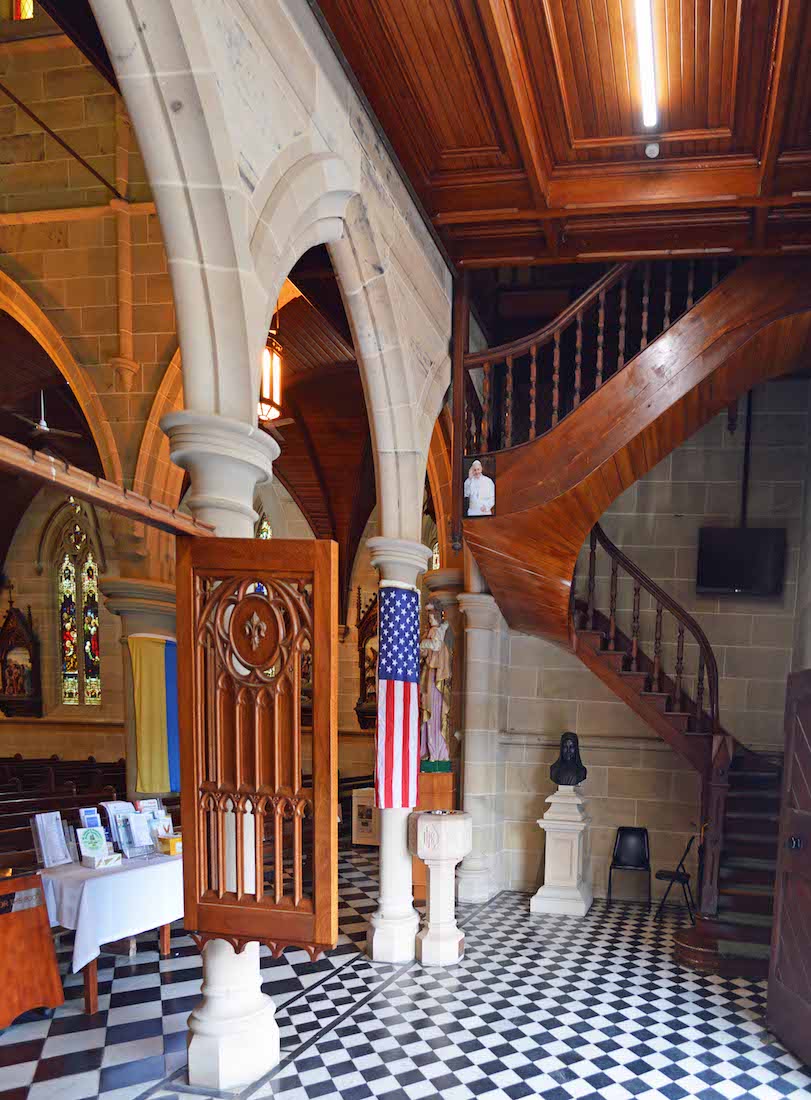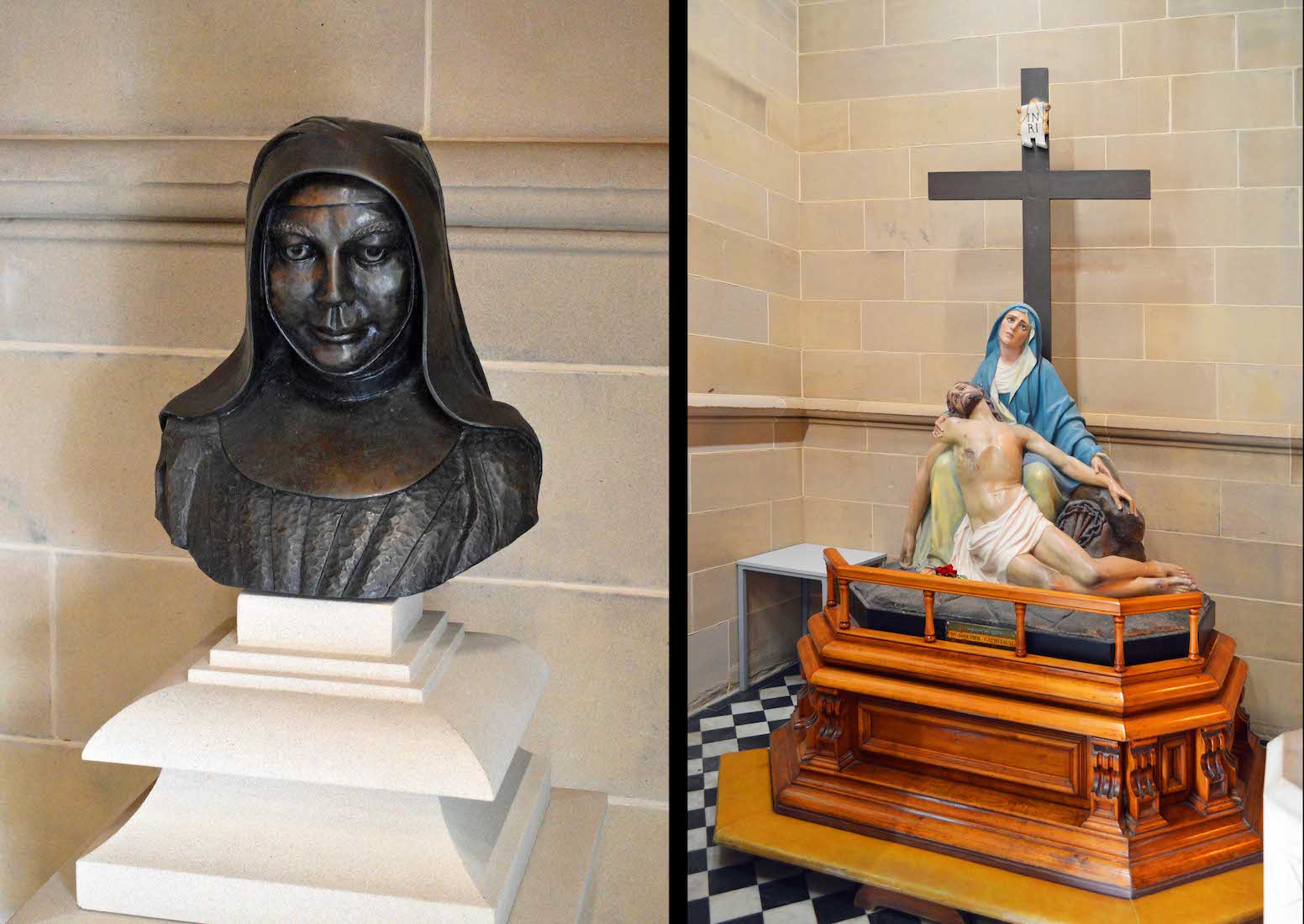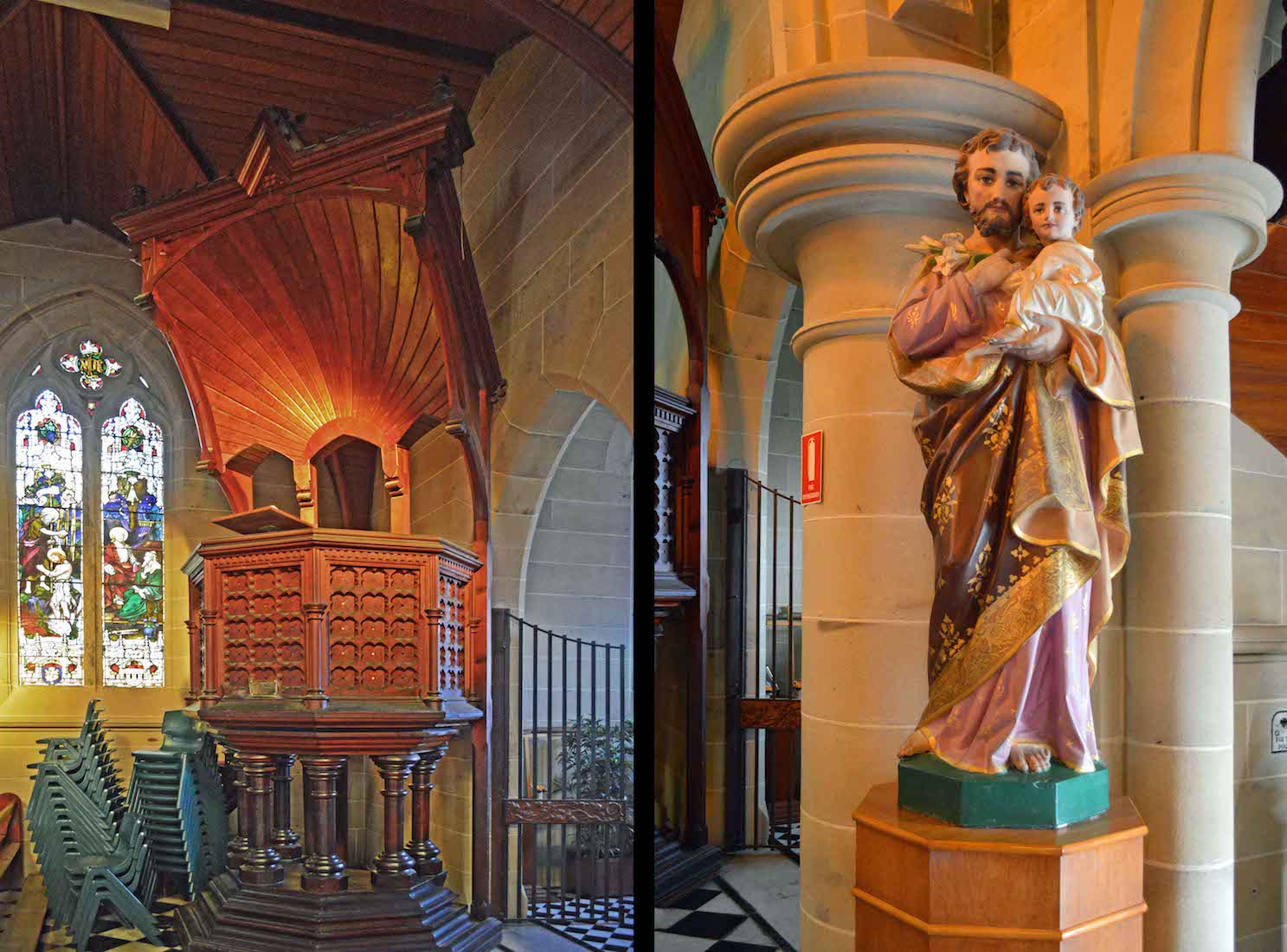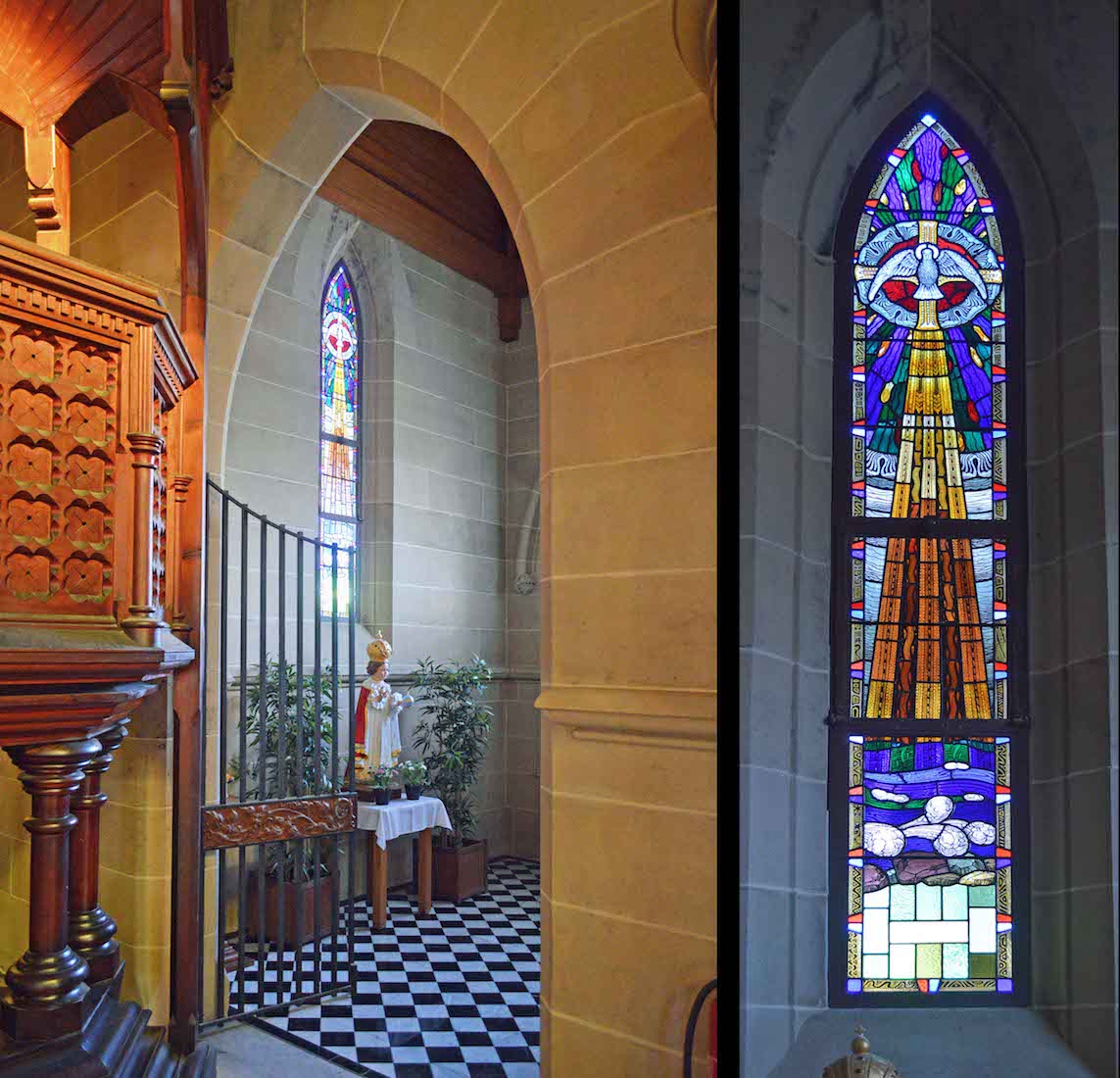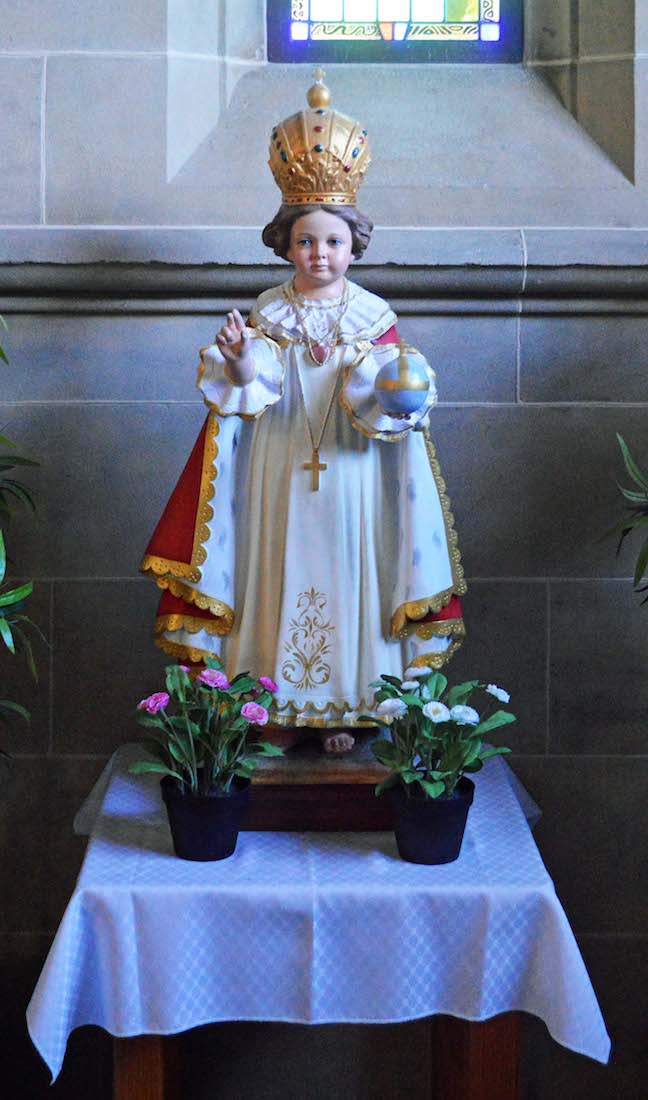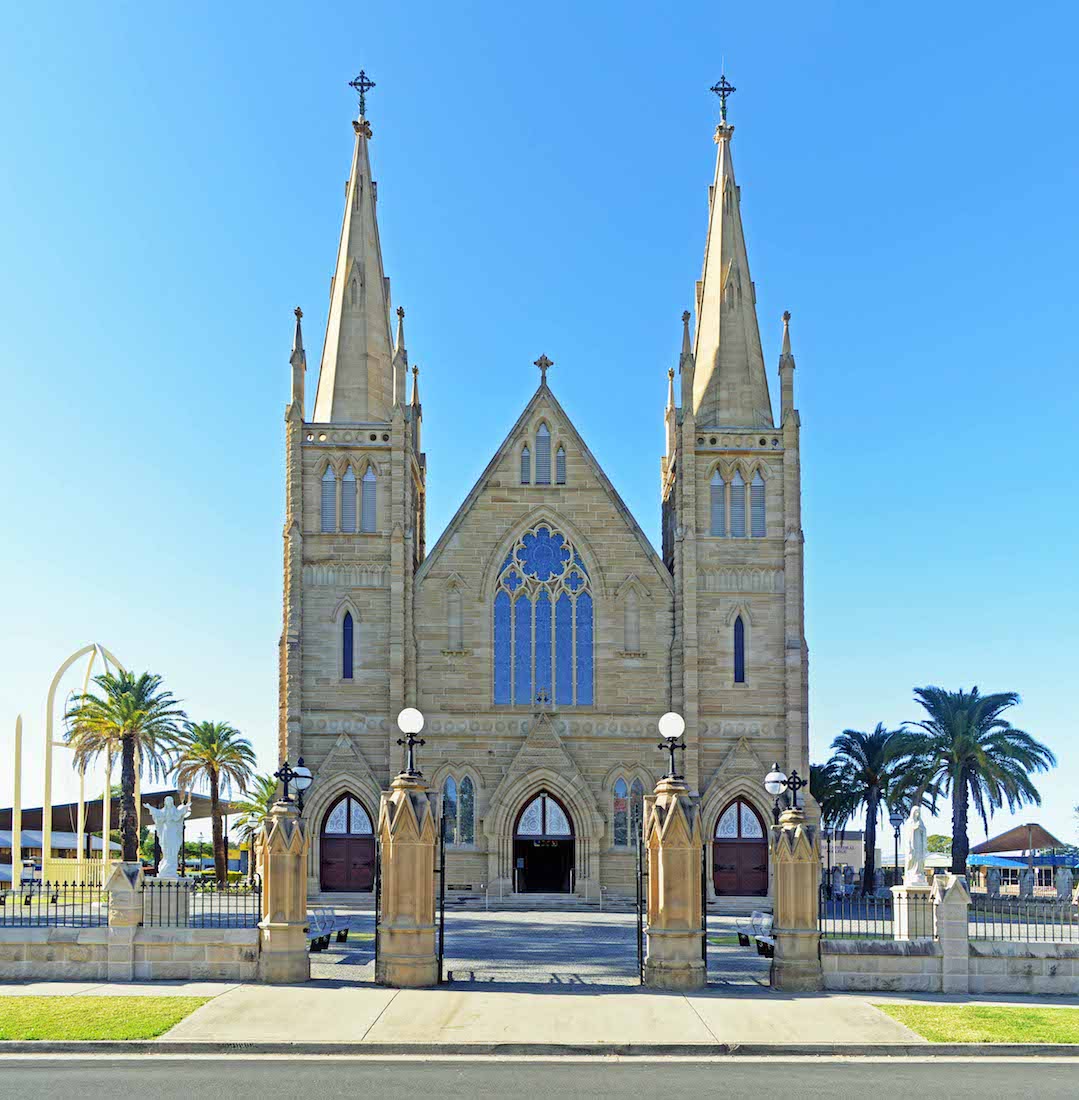
This is a handsome and impressive Cathedral. The West face is symmetric with a central entrance and traceries window above, and with a tall tower and spire on either side. PLAN
2. SOUTHWEST VIEW
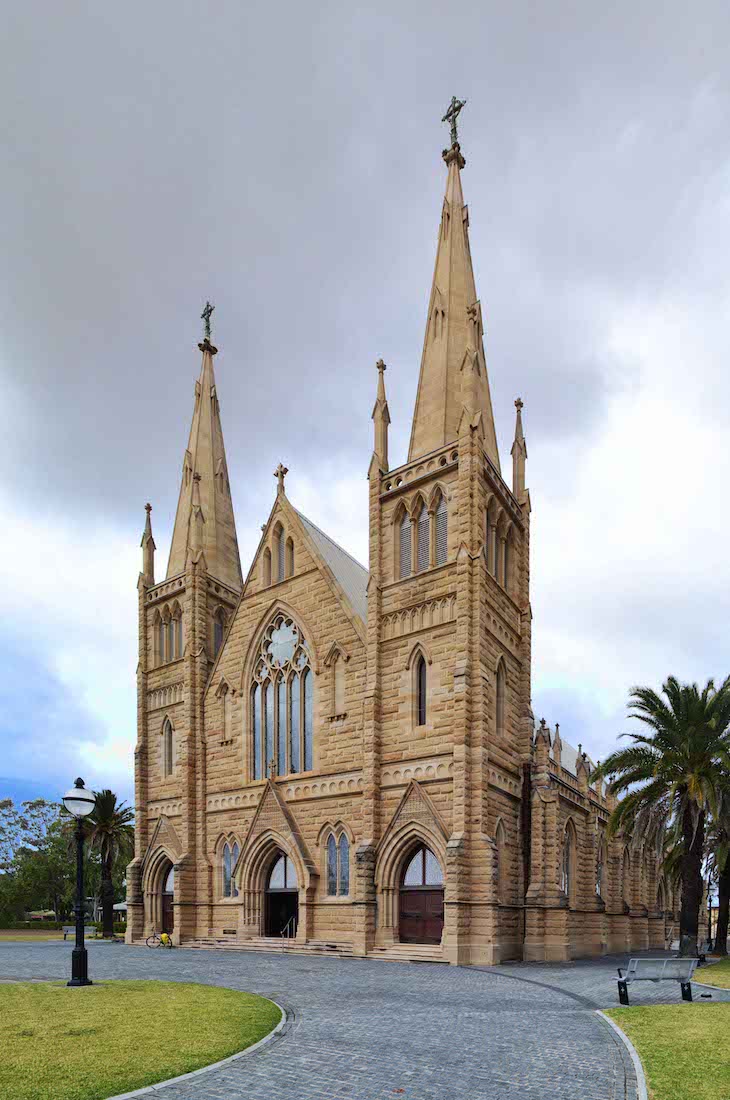
We begin our exploration of this Cathedral by walking around it in an anticlockwise direction. The Cathedral is constructed from rock faced coursed sandstone, with smooth faced sandstone detailing. The building stone was quarried at Stanwell, 24 kilometres west of Rockhampton. The quarry’s leasehold had been acquired by Bishop Cani for a mere fifty pounds.
3. ALONG THE SOUTH WALL
The Cathedral and grounds are very well kept. Walking along the South side, we are immediately aware of the many stained glass windows. A row of high clerestory windows is visible above. We note the clear patterned glass above the doors. The palm trees remind us of the Cathedral’s tropical location.
4. EAST WALL
The elegant East wall is also symmetric with a central apse and a chapel on either side. The walls have neat buttresses with corresponding pinnacles at roof level. The planter boxes are an interesting addition.
5. PLANTER BOXES
It might be argued that these colourful touches at the rear of the Cathedral are seldom seen. I am reminded of the old UK cathedrals where some exquisite carving and glasswork is only visible to God!
6. NORTHEAST VIEW
From here we see the chapter house with its link to the Cathedral. Further to the right is a bell tower, and a large covered area, suitable for outdoor gatherings where sudden tropical downpours are not unknown.
7. CHAPTER HOUSE
The octagonal chapter house is a nice traditional touch. No monks here! I was disappointed not to be able to gain entry to the chapter house: for clergy use only.
8. BELL
A single bell hangs near the Northwest tower. It was cast by an Italian foundry.
9. NORTHWEST VIEW
Our circuit is almost complete as we approach the West face again. From 2009, over the next few years the ground level around the building was lowered and new paving laid, new fencing surrounding the structure, the stonework was cleaned and re-pointed from top to bottom, inside and out, protective glass was installed over the stained glass windows, and damaged stone work was repaired and replaced – including the replacement of the top section of both the spires. The restoration work was completed in 2013 at a cost of $A6.5 million..
10. CATHEDRAL SIGN
The see-through Cathedral sign is smart and modern, and gives the names and contact details of Bishop and Dean. Service times might be more helpful!.
11. STATUES
The path from William Street to the main West door is flanked by two statues: the Sacred Heart, and the Virgin Mary. Mary is the Mother of Jesus, and has a special place in Catholic worship and devotion. Jesus, also referred to as Jesus of Nazareth or Jesus Christ is the central figure of Christianity. The Catholic reference to Jesus as ‘the Sacred Heart’ views the heart of Jesus as a symbol of God’s boundless and passionate love for mankind.
12. WEST WALL ITEMS
As we approach the West door we observe the towering spires, each with a Celtic cross at the top, the decorated gable above the entrance, and at ground level, the commemorative stone marking the Centenary of St Joseph’s Cathedral, 1899 – 1999.
13. NARTHEX
Passing through the West door, we find ourselves in the entry porch or portico or narthex – a small welcoming area. The organ loft is above, and we also notice the floor – tiled with original Italian Carrara marble, as is the rest of the Cathedral. On either side of the entrance is a stained glass window.
14. NARTHEX WINDOWS
The stained glass is a very special feature of St Joseph’s Cathedral. These two windows were installed in 1904. The window at left is entitled ‘Auxilium Christianorum’ (Help of Christians). It shows kings, religious and dignitaries seeking guidance from Our Lady, Help of Christians, Patroness of Australia. The plaque gives information about the donor. The window at right is entitled ‘Ora pro nobis’ (pray for us). People of all ages are shown appealing to St Francis Xavier, Patron Saint of Australia. This window was donated by W K D’Arcy. His wealth from mining Mt Morgan led to the formation of British Petroleum.
15. BALCONY STAIRS
On the South side of the narthex is a spiral flight of stairs up to the balcony and organ. Beneath it is a bust of Australian saint Mary McKillop.
16. ST MARY MCKILLOP AND PIETÀ
Mary Helen McKillop RSJ was an Australian nun who has been declared a saint by the Catholic Church, as St Mary of the Cross. Of Scottish descent she was born in Melbourne, but is best know for her activities in South Australia. On the North side of the Narthex we find this copy of The Pietà by Michelangelo. The title means ‘The Pity’. The original dates from 1498–1499, and is housed in St Peter’s Basilica, Vatican City.
18. OLD PULPIT AND ST JOSEPH STATUE
The original timber pulpit has been relegated to the Southern back corner of the nave. Nearby is a statue of Joseph holding the young Jesus. Joseph is holding his traditional flowering sprig in reference to an old legend. As with many cathedrals, there seems to be a problem storing chairs here!
19. TO SOUTHWEST ENTRY
The old pulpit stands close to the secondary Southwest entry. There is an interesting window here with an Aboriginal theme, showing the Holy Spirit as a dove hovering over the land.
20. CHRIST FIGURE
This figure is a version of The Infant Jesus of Prague, dating from 1555. In April 1639 the Swedish army began a siege of the city of Prague. When the army instead decided to pull out, the grateful citizens ascribed this to the Holy Infant.


